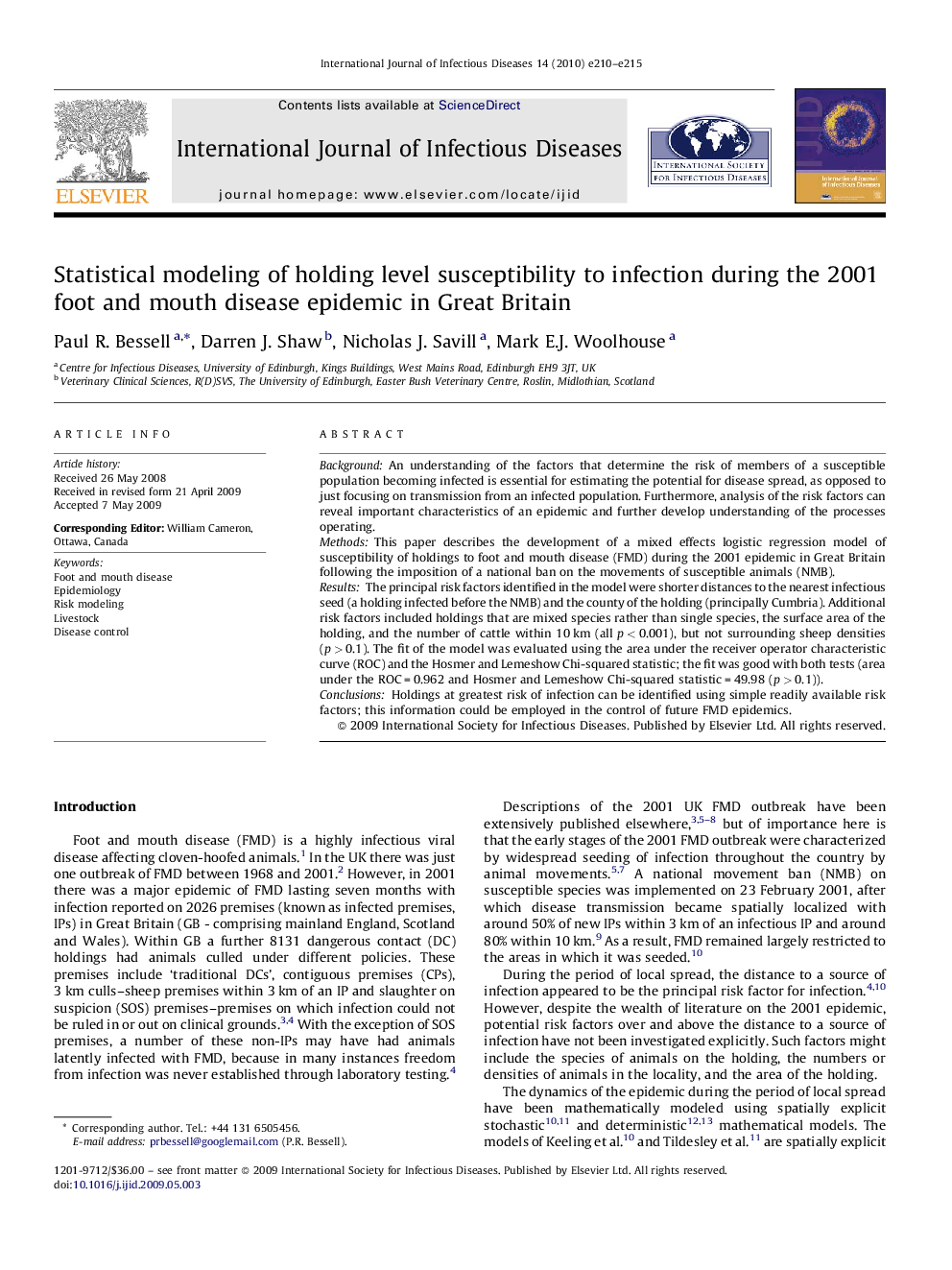| Article ID | Journal | Published Year | Pages | File Type |
|---|---|---|---|---|
| 3364132 | International Journal of Infectious Diseases | 2010 | 6 Pages |
BackgroundAn understanding of the factors that determine the risk of members of a susceptible population becoming infected is essential for estimating the potential for disease spread, as opposed to just focusing on transmission from an infected population. Furthermore, analysis of the risk factors can reveal important characteristics of an epidemic and further develop understanding of the processes operating.MethodsThis paper describes the development of a mixed effects logistic regression model of susceptibility of holdings to foot and mouth disease (FMD) during the 2001 epidemic in Great Britain following the imposition of a national ban on the movements of susceptible animals (NMB).ResultsThe principal risk factors identified in the model were shorter distances to the nearest infectious seed (a holding infected before the NMB) and the county of the holding (principally Cumbria). Additional risk factors included holdings that are mixed species rather than single species, the surface area of the holding, and the number of cattle within 10 km (all p < 0.001), but not surrounding sheep densities (p > 0.1). The fit of the model was evaluated using the area under the receiver operator characteristic curve (ROC) and the Hosmer and Lemeshow Chi-squared statistic; the fit was good with both tests (area under the ROC = 0.962 and Hosmer and Lemeshow Chi-squared statistic = 49.98 (p > 0.1)).ConclusionsHoldings at greatest risk of infection can be identified using simple readily available risk factors; this information could be employed in the control of future FMD epidemics.
